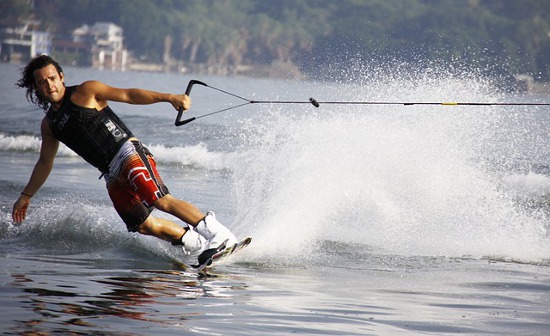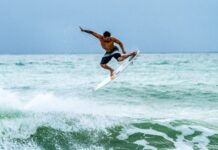Water games are very dear to many people and that is why they keep on trying them too often. For example, wakesurfing is enjoyed a lot by the people and that is why we can see the availability of good guide to wakesurfing. Successfully choosing the right water ski depends on the type and shape of the skis as much as it does the skier. Additionally, the type of water you enjoy will impact the type of ski you should buy. Finally, water skiing is an exhilarating sport that involves self-expression through skiing styles and appearance. Consequently, it is important to select a pair of skis that reflect your tastes. Finally, in terms of safety, there are more than a few things to consider.


1. Experience level
Skiers with more experience can likely benefit from stiff skis with a fully concave shape. Full concavity allows the skis to rest on narrow twin edges that skim the water. Skiers that are more inexperienced will benefit from less concavity while beginning skiers will want flat skis that provide as much surface tension and contact as possible.
2. Speed
Skis are rated according to speed. For safety, beginners will want a ski rated at 24 mph to 32 mph while more experienced skiers might want a ski rated at 28 mph to 34 mph. Experienced or competitive skiers can look for tight-angle skis capable of delivering speeds of 36 mph.
3. Length
The length of the ski will impact turns and your ability to remain stable as you are being pulled behind a boat. Length also impacts your ability to start easily. For instance, shorter skis of approximately 65 to 66 inches will accommodate faster speeds as long as they are rated for riders of the appropriate weight. Similarly, longer skis of up to 68 inches provide the most stability for skiers looking for a casual experience. The reason longer skis are more stable is that there is more platform before the toes and behind the heel. Professional skiers wanting the fastest experience will opt for lengths as short as 59 inches.
4. Appearance
Skis come in a variety of colors, but it is important that the appearance does not unnecessarily glare off the sun or the reflections off the waves. That said, they should be bright enough in the water so that other boaters can see a downed skier from a distance. Finally, it is always best if they match most of your swimsuits or trunks.
5. Surface area
Surface area consists of the overall area that touches the water, and the thing to remember is that more surface area translates into greater stability. If you want to do tricks and manage sharp turns, you can look for a ski with a blend of high concavity and short length as this combination creates a low surface area. Conversely, you should look for less concavity or a flat ski with lengths of up to 68 inches if you prefer a comfortable, safe ride.
6. Weight
In the same way that skis are rated according to speed they can deliver, they are also rated according to the weight they can support. Small skis will fit riders up to 135 pounds, and small to medium skis will accommodate skiers up to 185 pounds. Large skis will fit heavy riders up to 210 pounds, and extra-sturdy skis can handle skiers in excess of 225 pounds.
7. Skiing style and environment
Sometimes you will not want to consider measurements or the technical rating of a ski. Instead, you can match your ski to your style of skiing. For instance, if you want to compete in tournaments that involve a lot of turns around buoys, you will want skis that are rated for higher speeds. Similarly, you can select a ski with a V-shaped bottom if you are going to be in choppy waters and popping over waves or wakes.
8. Bindings
Perhaps the most technical aspect of the ski is the binding. The bindings do exactly what you might think they would do in that they keep you bound to the ski via the boot and binding plate. The boots should fit comfortably on your feet, leaving very little room. If you have too much room in the boot, the resulting play will create an unstable ride.
The binding material is also important. For instance, a rubber binding will provide more give while a hard shell will be firm and relatively unyielding. Stiffer bindings help you remain upright on the edge of the ski while softer bindings will release easier in a fall. Consequently, the binding should be chosen for comfort and personal preference in regards to whether you want to attempt to stay upright or have the ski release after the inevitable spill.
9. Fins
Fins help steer and support a skier, so beginning or casual skiers will benefit from the longest, deepest fins. Moderate fins will help people learn to ski faster. Short fins are for skiers who might want to do tricks, and competitive skiers or trick artists can opt for skis that have no fins.
10. Bevel
The bevel is the rounded edge of the ski. A round bevel will be fast and hard to control. A ski with no bevel will ride the waves, providing a safer experience for beginning riders.

























